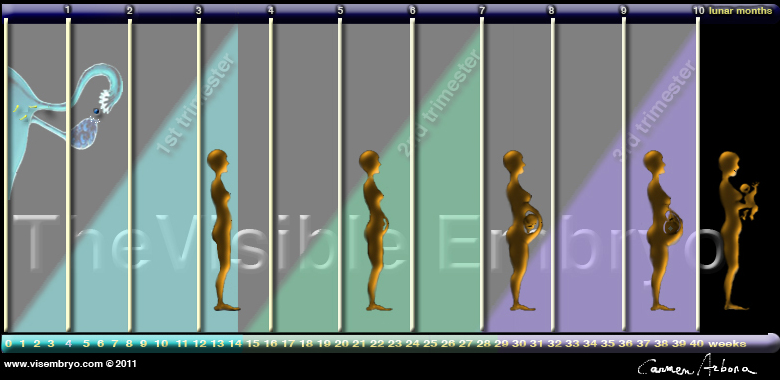|
|
Developmental Biology - R-Loops
Understanding Influence of R-Loops
R-Loops influence cell identity and errors in their configuration may initiate neurogenerative disorders...
A new cell study identifies a key mechanism in cell differentiation, molecules known as R-loops which naturally form during cell differentiation. Also called Polycombs, researchers believe R-loops could be influencing neurogenerative disorders such as Amyotrophic Lateral Sclerosis (ALS) and Fragile X.
Developmental genes are controlled epigenetically, which means they are switched on and off indirectly. Nothing changes in the genetic material itself. Instead, enzymes modify the protein scaffolding around which DNA is wound, like thread on a spool.
Konstantina Skourti-Stathaki PhD, University of Edinburgh, School of Biological Sciences, Scotland, and study leader.
Skourti-Stathaki explains that not all genes are equally important for the development of body cells in a fertilized oocyte. Just a few genes determine whether each cell is to become tissue, organ or bone.
Vertebrate animals have CpG or CGI islands — short interspersed DNA sequences significantly different from the regular genomic pattern. Being CpG-rich or CGI-rich, these sequences are predominantly un-methylated — meaning they have no methyl groups around which they are wound to slow or stop gene formation. Most, if not all, CGI sites are where gene transcription is initiated, transcription being the first step toward gene function. DNA is copied into RNA (ribonucleic acid) according to the instructions in the DNA code at that site.
Thousands of CpG islands are remotely located away from DNA sequences called 'annotated promoters' — situated in the 5' region adjacent to a transcription start point. RNA polymerase and accessory proteins (also known as transcription factors) bind to these promoter regions in order to start production of 'mRNA transcripts'.
Shared DNA sequences adapt CGIs in order to attract proteins and create a transcription factor when the need arises. Silencing or stopping CGI promoters, happens with dense CpG methylation or polycomb recruitment. CGIs are equipped to influence local chromatin structure in order to simplify regulation of gene activity.
“The need for research in this field is huge, especially in humans and mammals.”
Ana Pombo PhD, Professor, the Berlin Institute for Medical Systems Biology, Max-Delbrück-Centrum für Molekulare Medizin; Berlin Institute of Health and Institute for Biology, Humboldt-Universitat zu Berlin, Berlin, Germany.
“The Polycomb mechanism plays a role in cancer and even in neurological diseases such as schizophrenia,” adds Skourti-Stathaki. Like Polycomb proteins, R-loops seem to have special, though largely unknown, functions in neuronal cells. Skourti-Stathaki explains: “Where R-loops – or the proteins that dissolve them – are missing, severe neurological diseases such as ataxias, a loss of motor coordination, occur.”
The study was carried out by collaboration between the Max Delbruck Centre for Molecular Medicine in Berlin and the University of Edinburgh, and supported by Wellcome and the European Research Council. It is published in Molecular Cell.
"This new insight answers fundamental questions, while opening new avenues for future research and possible routes towards drug treatments."
Konstantina Skourti-Stathaki PhD.
Highlights
• R-loops form at a subset of PcG target genes
• R-loops contribute to PcG recruitment genome-wide
• Loss of R-loops leads to transcriptional activation of R-loop-positive PcG targets
• R-loops and PRC1 contribute to transcriptional repression of PcG targets
Summary
R-loops are three-stranded nucleic acid structures that form during transcription, especially over unmethylated CpG-rich promoters of active genes. In mouse embryonic stem cells (mESCs), CpG-rich developmental regulator genes are repressed by the Polycomb complexes PRC1 and PRC2. Here, we show that R-loops form at a subset of Polycomb target genes, and we investigate their contribution to Polycomb repression. At R-loop-positive genes, R-loop removal leads to decreased PRC1 and PRC2 recruitment and Pol II activation into a productive elongation state, accompanied by gene derepression at nascent and processed transcript levels. Stable removal of PRC2 derepresses R-loop-negative genes, as expected, but does not affect R-loops, PRC1 recruitment, or transcriptional repression of R-loop-positive genes. Our results highlight that Polycomb repression does not occur via one mechanism but consists of different layers of repression, some of which are gene specific. We uncover that one such mechanism is mediated by an interplay between R-loops and RING1B recruitment.
Authors
Konstantina Skourti-Stathaki, Elena Torlai Triglia, Marie Warburton, Philipp Voigt, Adrian Bird, Ana Pombo.
The authors declare no conflict of interest.
Acknowledgements
This work was supported by a Sir Henry Wellcome Fellowship (grant 101489/Z/13/Z to K.S.-S.), the Wellcome Trust (grant 091580/Z/10/Z and Investigator Award 107930/Z/15/Z to A.B.), a Sir Henry Dale Fellowship (104175/Z/14/Z to P.V.), and funding from the European Research Council (ERC) under the European Union’s Horizon 2020 research and innovation programme (ERC-STG grant agreement 639253 to P.V.). The Wellcome Centre for Cell Biology is supported by core funding from the Wellcome Trust (203149). A.P. and E.T.T. thank the Helmholtz Association (11431). We thank Tiago Rito (Pombo lab, currently Rockefeller University, USA) for initial processing of GRO-seq data, R.J. Crouch (NIH, Bethesda, MD, USA) for the GFP-RNase H1 plasmid, João Dias (Pombo lab) for advice on UNC treatment, Elana Bryan and Kim Webb (Voigt lab) for help generating the Ezh2 KO cell line, and Ricardo Nunes Bastos (Oxford Nanoimaging, UK) for help with figure formatting. We finally thank the members of A.P. and A.B. labs for advice and fruitful discussions.
Return to top of page
| |
|
Mar 22 2019 Fetal Timeline Maternal Timeline News
 Culturing kidney organoids under fluid flow causes endogenous endothelial progenitors to create more mature vascular networks which pervade the whole organoid and interact with epithelial compartments. Video: Wyss Institute at Harvard University.
|



